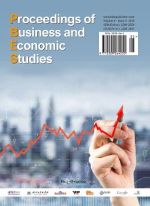Abstract
With the intensifying competition in the integrated circuit (IC) industry, the high turnover rate of integrated circuit engineers has become a prominent issue affecting the technological continuity of high-precision, specialized, and innovative enterprises. As a representative of such enterprises, JL Technology has faced challenges to its R&D efficiency due to talent loss in recent years. This study takes this enterprise as a case to explore feasible paths to reduce turnover rates through optimizing training and career development systems. The research designs a method combining learning maps and talent maps, utilizes a competency model to clarify the direction for engineers’ skill improvement, implements talent classification management using a nine-grid model, and achieves personalized training through Individual Development Plans (IDPs). Analysis of the enterprise’s historical data reveals that the main reasons for turnover are unclear career development paths and insufficient resources for skill improvement. After pilot implementation, the turnover rate in core departments decreased by 12%, and employee satisfaction with training increased by 24%. The results indicate that matching systematic talent reviews with dynamic learning resources can effectively enhance engineers’ sense of belonging. This study provides a set of highly operational management tools for small and medium-sized high-precision, specialized, and innovative technology enterprises, verifies their applicability in such enterprises, and offers replicable experiences for similar enterprises to optimize their talent strategies [1].
References
Yang C, 2025, Research on Turnover Intention of Frontline Employees in Enterprises under the Background of New Productivity. Operations Research and Fuzziology, 15: 493.
Fu X, Xie J, 2025, Recognition of “Small Giants” with Specialization, Excellence, and Innovation and Positive Transition of Dual Innovation. East China Economic Management, 39(2): 12–23.
Zhang J, et al., 2022, Toward Next-Generation Engineering Education: A Case Study of an Engineering Capstone Project Based on BIM Technology in MEP Systems. Computer Applications in Engineering Education, 30(1): 146–162.
Sarkar S, Kedas S, 2023, Globally Distributed Talent Communities: A Typology of Innovation Problems and Talent Characteristics. Thunderbird International Business Review, 65(1): 89–102.
Jia C, Wang G, 2024, Analysis of Measurement Indicators for “Specialized, Refined, Unique, And Innovative” Enterprise—Taking JW Company as an Example. E-Commerce Letters, 13: 3866.
Ciolacu MI, et al. Fostering Engineering Education 4.0 Paradigm Facing the Pandemic and VUCA World. Procedia Computer Science 217 (2023): 177–186.
Zeng X, Zeng K, Ren H, et al., 2024, Research on the Growth of Specialized, Fine, Unique, and Innovative Enterprises: A Review and Prospect. Foreign Economics and Management, 46(1): 62–76.
Call DR, Herber DR, 2022, Applicability of the Diffusion of Innovation Theory to Accelerate Model-Based Systems Engineering Adoption. Systems Engineering 25(6): 574–583.
Xia Q, Zhu Q, 2023, Configuration Analysis and Paradigm Selection of Breakthrough Innovation in “Specialized, Precise, Unique, and Innovative” Enterprises. Foreign Economics and Management, 45(10): 35–48.
Zhu L, Fang L, 2025, Research on the Dilemmas and Paths for Enhancing the Key Core Technological Capabilities of Specialized, Precise, Unique, and Innovative Manufacturing Enterprises. Modern Management, 15: 199.
